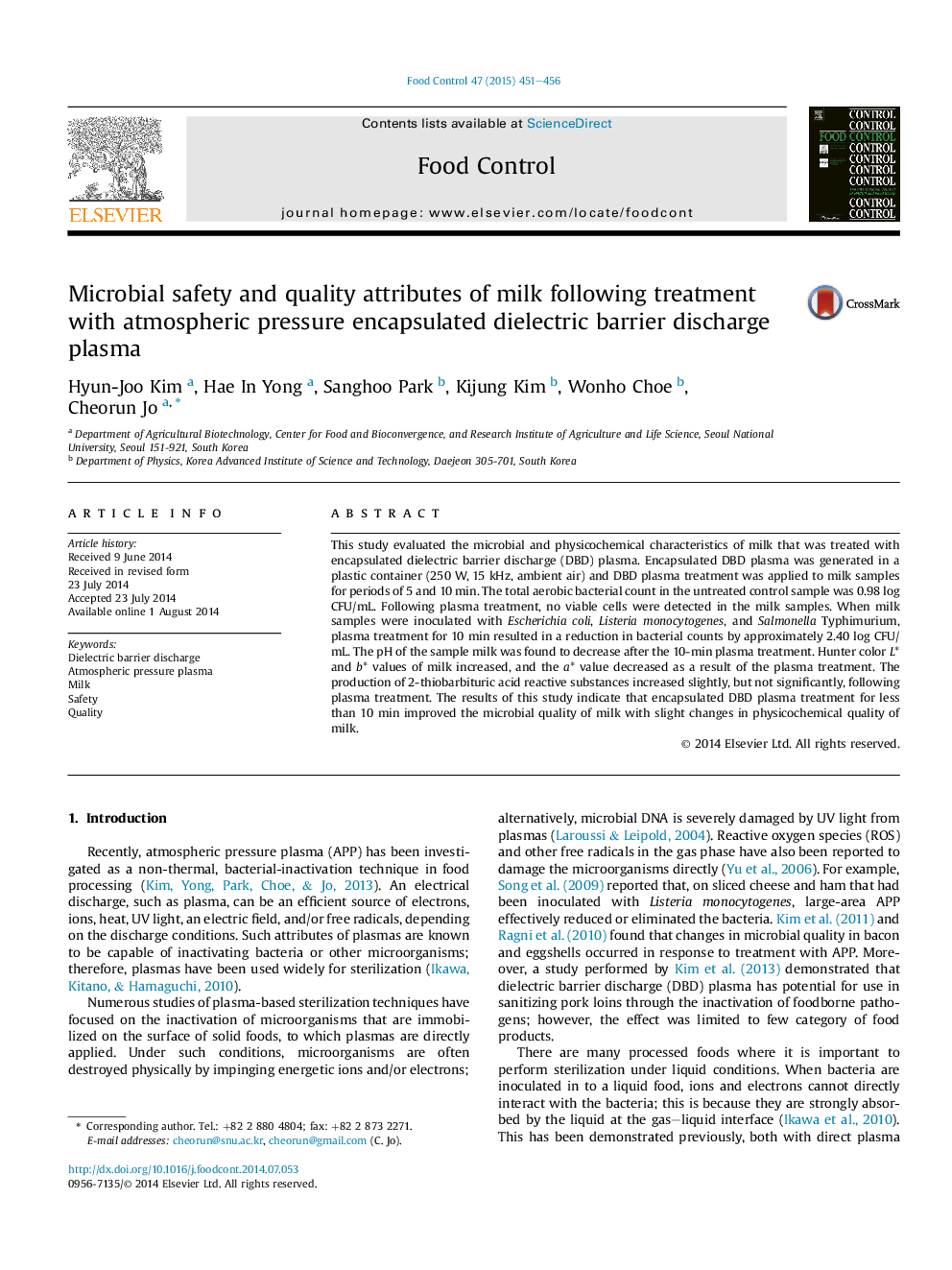| Article ID | Journal | Published Year | Pages | File Type |
|---|---|---|---|---|
| 6391454 | Food Control | 2015 | 6 Pages |
â¢Encapsulated dielectric barrier discharge (DBD) plasma system was developed.â¢Safety and quality of milk were evaluated after the plasma treatment.â¢The encapsulated DBD plasma significantly reduced the number of pathogens.â¢pH, color, and lipid oxidation of milk were slightly changed.
This study evaluated the microbial and physicochemical characteristics of milk that was treated with encapsulated dielectric barrier discharge (DBD) plasma. Encapsulated DBD plasma was generated in a plastic container (250Â W, 15Â kHz, ambient air) and DBD plasma treatment was applied to milk samples for periods of 5 and 10Â min. The total aerobic bacterial count in the untreated control sample was 0.98 log CFU/mL. Following plasma treatment, no viable cells were detected in the milk samples. When milk samples were inoculated with Escherichia coli, Listeria monocytogenes, and Salmonella Typhimurium, plasma treatment for 10Â min resulted in a reduction in bacterial counts by approximately 2.40 log CFU/mL. The pH of the sample milk was found to decrease after the 10-min plasma treatment. Hunter color L* and b* values of milk increased, and the a* value decreased as a result of the plasma treatment. The production of 2-thiobarbituric acid reactive substances increased slightly, but not significantly, following plasma treatment. The results of this study indicate that encapsulated DBD plasma treatment for less than 10Â min improved the microbial quality of milk with slight changes in physicochemical quality of milk.
